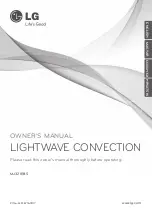
Cleaning
Page GB-13
CAUTION!
Risk of burns!
■
Allow the oven to cool completely be-
fore cleaning.
■
Never pour water directly onto the
hot oven. The steam can cause scald-
ing and damage the enamel.
■
Allow hot water from the oven to cool
before pouring it out.
■
Only change the oven light bulb once
the oven has cooled down.
NOTICE
Risk of damage!
■
For cleaning purposes, do not use
any harsh, abrasive cleaning agents
or scouring agents, steel wool, met-
al scrapers, oven sprays, steam clean-
ers or high-pressure cleaners! They
can damage the surface and destroy
the glass. High-pressure cleaners can
cause a short circuit.
Cleaning the front of the
housing
– After cooling, thoroughly clean the surfac-
es with warm rinsing water or all-purpose
cleaner.
– For stainless steel surfaces, you can also
use special care products made just for
stainless steel surfaces.
Cleaning the cooking
compartment
– Only switch on the oven light for cleaning.
– Clean the cooking compartment and bak-
ing trays after every use, and rinse with
warm water.
– Clean the door seal in the same way. But
be very careful as it is only attached in cer-
tain places, and is otherwise loose.
Steam cleaning
Steam cleaning is a wet cleaning process
that uses steam to remove light stains and
dirt. That’s how you clean the cooking com-
partment in an energy-efficient manner while
conserving materials.
1. Remove the oven rack (7) and baking tray
(8) from the cooking compartment.
2. Slide the dripping pan (9) into the lowest
rack level and pour about 0.5 litres of wa-
ter into it.
3. Turn the function switch (1) to top and
bottom heat and the temperature con-
troller (3) to 100 °C.
4. Set the timer (2) to 30 minutes.
5. After the time has elapsed, allow the oven
to cool until the oven walls are only luke-
warm.
6. Use potholders or something similar to re-
move the dripping pan from the oven and
pour out the remaining water.
7. Wipe the cooking compartment off with a
damp cloth or sponge.
8. Rinse off the oven rack, baking tray and
dripping pan.
Cleaning
















































